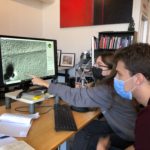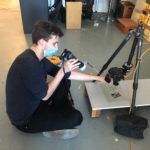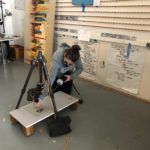Between Monday, May 9th and Wednesday, May 11th, graduate students affiliated with the Nemea Center for Classical Archaeology (AHMA & DAGRS) took part in an ‘RTI workshop’ at Cultural Heritage Imaging (CHI), a non-profit organization in San Francisco. RTI, or Reflectance Transformation Imaging, is a photographic method that captures an object’s shape and color to reveal surface information that may be invisible to the naked eye. Images are created from multiple photographs of an object where each shot is taken with light projected from a different direction to produce varying highlights and shadows. These images are then combined so the changing interplay of light and dark shows details of the object’s surface. Nowadays, RTI is regularly used in archaeology and epigraphy (among other disciplines) to study artifacts and inscriptions at a more advanced level. RTI can reveal clues about how objects were made or altered, how they were attached to other objects or surfaces, how they were inscribed or re-inscribed (sometimes even revealing parts of inscriptions that are no longer visible to the general observer), and much more information depending on the type of object.
Participating in the workshop were students David Wheeler (AHMA), Flavio Santini (AHMA), Dimitrios Sparis (AHMA), Yesenia Brambila (DAGRS), Madolyn Hyytiainen-Jacobson (DAGRS), and Talia Prussin (AHMA). They learned RTI techniques and practiced on replicas of ancient artifacts and epigraphical squeezes preserving the content of ancient inscriptions – including several from Nemea! The training session was generously founded by the Sara B. Aleshire Center for the Study of Greek Epigraphy at UC Berkeley. We hope more training opportunities for students will become available through the cooperating centers and programs here at UC Berkeley!








Leave a Reply